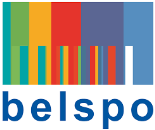The journal “Vaccine X” published a research article that was a collaboration between Sciensano’s LINK-VACC project and the HELICON project. Hubin and colleagues aimed to investigate the impact of individual and municipal demographic and socio-economic factors on COVID-19 vaccination rates.
The methods built on data linkage between the Belgian vaccine register (Vaccinnet+), COVID-19 test results (the COVID-19 healthdata.be tests database), and demographic and socio-economic variables (Statistics Belgium). The researchers performed multilevel logistic regression analyses to evaluate both aggregated (municipality level) and individual-level data, encompassing a study population of over 5,313,607 persons. The results revealed significant disparities in vaccination rates based on migration background, income and age, as well as regional differences, with Flanders showing higher vaccination coverage than Brussels and Wallonia. The conclusion emphasized that individual-level factors predominantly drive vaccination uptake, although accounting for area-level variables enhances the understanding of vaccination disparities. The study underscores the importance of detailed individual data for accurately assessing the socio-economic determinants of health outcomes.
The full article is available via https://www.sciencedirect.com/science/article/pii/S259013622400069X

